The ride from Benin City to Ile-Ife was not as difficult as my prior overland travel in Nigeria. Evangelist Christians are omnipresent in most of the southern part of the country with Muslims predominating in the north and traditional animist and other religions hanging on to survival a bit behind the scenes.

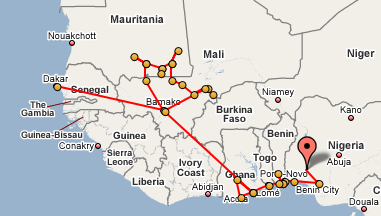
The Ife Museum in Ile-Ife had the following exhibits–
Musical instruments:
Rattles (calabash)
Metal gong
Gan-gan (talking drum with stick)
Saworo (metal musical instrument)
Metal ornaments:
Bracelets, ring, from 10-11th century CE, beautiful designs, woman-figures
Ibeji twin figures
Yoruba consider twins a source of blessing, bring good fortune to parents
Barren women can approach Ogun during Olojo festival to gain fertility, possibly even twins
Ibom masquerade among Efik people in Calabar – snake-like cords and raffia skirt
King and Queen, probably Ooni and wife, his left leg around her right leg, many beads in their crowns, beads on hands, chest, feet, rings on second toes, excavated by Frank Willet at Ita-Yemoo, dated 11-12th century CE, bronze, his face brown, her face green
Emir of Kano’s fara (jester)
Royal stool, terracotta, largest known in Africa from Iwinrin Grove, Ile-Ife, human figure standing on four-legged rectangular stool, behind him a pole of some king with a protrusion over the stool and between its feet
Olokun head, god(dess?) of the sea, giver of children, healer of abdominal disease, treat water with herbs for drinking
Ceremonial Insignia
Heavy next ring with spiral decorations at bottom of think neck loop
Brass mace heads, with aged gagged men with hole for mounting on wood shaft
Brace scepters, one with gagged men, from Ita-Yemoo, Ife
Glass beads made at Olokun Grove, melted in crucibles, various colors, Segi blue beads the most valued by Yoruba, thin and long, light blue
Animal Life
Rams, goats, kids represent offerings to gods and ancestors
Dogs also perhaps, but also as human companion
Snakes and chameleons are sacred
Monkeys in legends
Owl unique in west African art
Yoruba oba may own 40-50 crowns, most made of colored beads, collars over necklaces of fold, fly-whisk of horse hair
Offering pots at shrine or sacred grove, or burial place
Ade Owo Eyo – crown of cowrie cells, worn by wealthy individuals
Hunter mask – skin-covered wooden mask worn as camouflage
Sango stool and staffs
Orere Ifa (Ifa priest staff)
Wooden tray for divination with palm nuts
Divination tray (wooden) – with Opele divination instrument, dried fruit of Schnebera Golugensis – has convex and concave surfaces
Araba – Ifa chief priest – bust adorned with cowries selected from male Ifa worshipers without facial marks, presides over Ifa meetings and annual Ifa festival proceedings
Ase juju – usually prepared inside horn of ram or goat, invoked for cursing or healing, protruding pin inside the Ase – when removed and touches tongue, becomes a potent force of command, cursing, or healing
Ojboni metal crown – conical with facial representation, secret cult originating in Yorubaland and spreading elsewhere
Beaded bag – used by Yoruba ritual specialists, esp. Ife diviners and Sango priests
Archaeology in Ife:
Lander, 1830
Elgee, 1908
Ennett, 1910
Frobenius excavated Olokun Grove
Wunmonjie finds in 1938
Osangangan Obamakin Grove, 1943
Abiri excavation by Bernard Fagg, 1949
Ogun Ladin, Olokuri Walode, Ogbon Oya, 1953
Yemoo, Frank Willet, until 1983
Obamari Grove and Oduduwa College, Oliver Myers, 1964 and 1966
Stone carvings from Ore (One?) Grove
Potsherds Pavement – Luwoo – during reign of only female ooni of Ife-Luwoo, c. 1100 CE
Opa Oranmiyan (Oranmiyan staff)
Legend of sword that turns into obelisk
Oranminyan, youngest son of Odududwa, c. 1200-1300 CE
Husband of Moremi, heroine of Ife
Benin dynasty founded by Oranmiyan, married one of their daughters
Gave birth to Eulaka, first Oba of Benin
Then went to Oyo where his son Ajaka became Alaafin of Oyo
Oranmiyan then drove Ooni Aleyemore (son of Obalufon Ogbogboirin) off the throne of Ife (he had taken throne after Oduduwa’s death)
Ile-Oduduwa – location where Oduduwa believe to have resided
Oke Mogun (Ojobo) shrine, sacrifice offered to Ogun, god of iron, during Olojo festival, Ooni of Ife must visit twice to offer prayers for subjects during Olojo festival, only day when ooni dons the Are (or Ave?) crown
Igbo-Ukwu, 9th century CE, found burial chamber and art in 1938
Conical heads, used offerings at shrines or memorials to ancestors as tradition possibly elder than naturalistic heads
Crucibles found at Itajero used for making beads
Olokun Grove only place with both iron smelting and glass bead technology
Lokoloko stick – used to control crowd during Olojo festival
Osangangan Obamakin Grove – terracotta figure with elephantiasis of scrotum (Ile-Ife)
Ajilekege – granite head from Esure Ekiti, Ife
Stone vessel excavated from Orangangan Obamakin Grove – bubble at top suggesting palm wine fermentation, palm wine essential ritual item for Ogun during Olojo festival
Edan Ogboni – brass insignia worn around neck, male and female figures joined by chain, given to every member of Ogboni/Osugbo society among Yoruba
Ceremonial insignia of Yoruba cults:
Edau figure
Oluwo staff
Yeye
Plier ceremonial tool
Small scythe-like ceremonial tool
Gun powder flask with double face
Ogboni bell for heralding commencement of meeting
Oluwo figure
Bell probably used by Ifa cult, tall conical brass, nine inches long
I almost didn’t get to see the Oba’s palace in Ile-Ife, but luckily some other tourists wanted to see it at the same time, so they gave us a little tour for a little price. It was there I learned about Moremi, “the heroine from premordial times” who, when captured as a slave by the Ugbo people eventually married the Ugbo ruler and became the queen to discover the secret of the Ugbo’s power so that she could bring it back to her people, the Yoruba, and defeat the Ugbo.
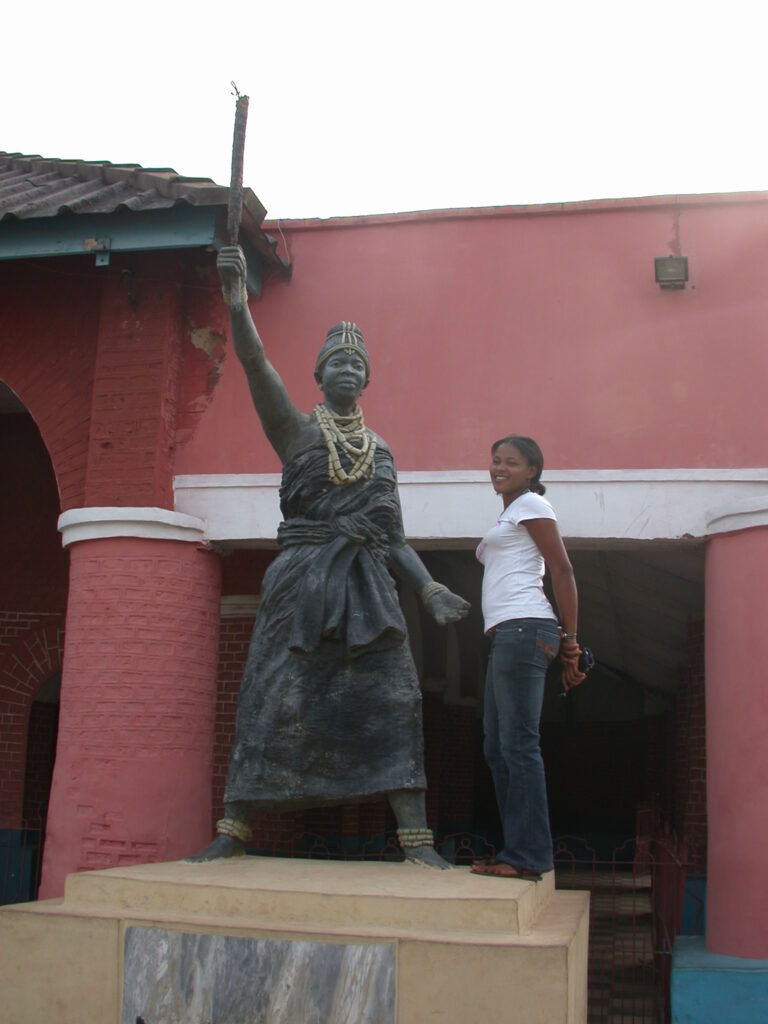
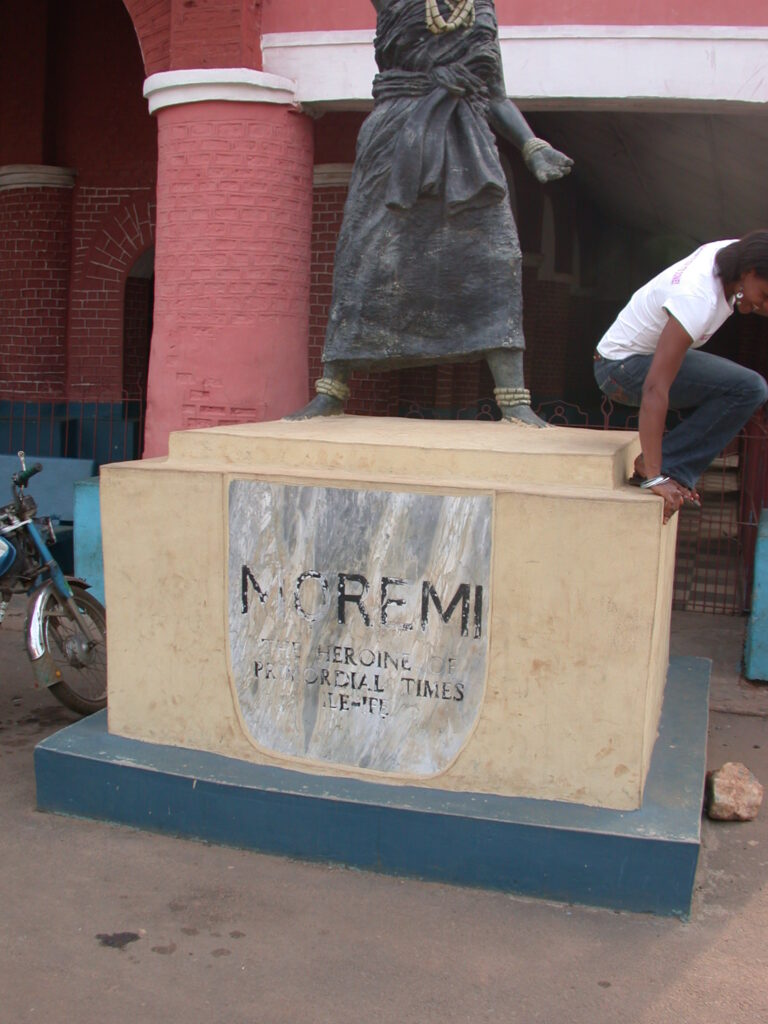
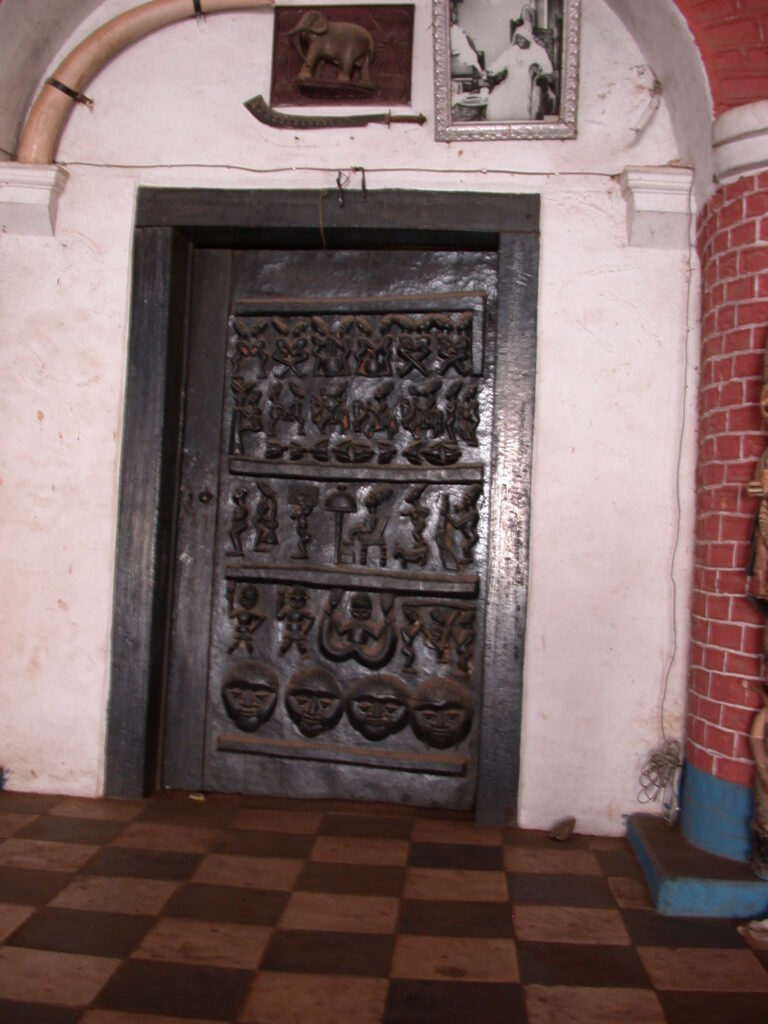
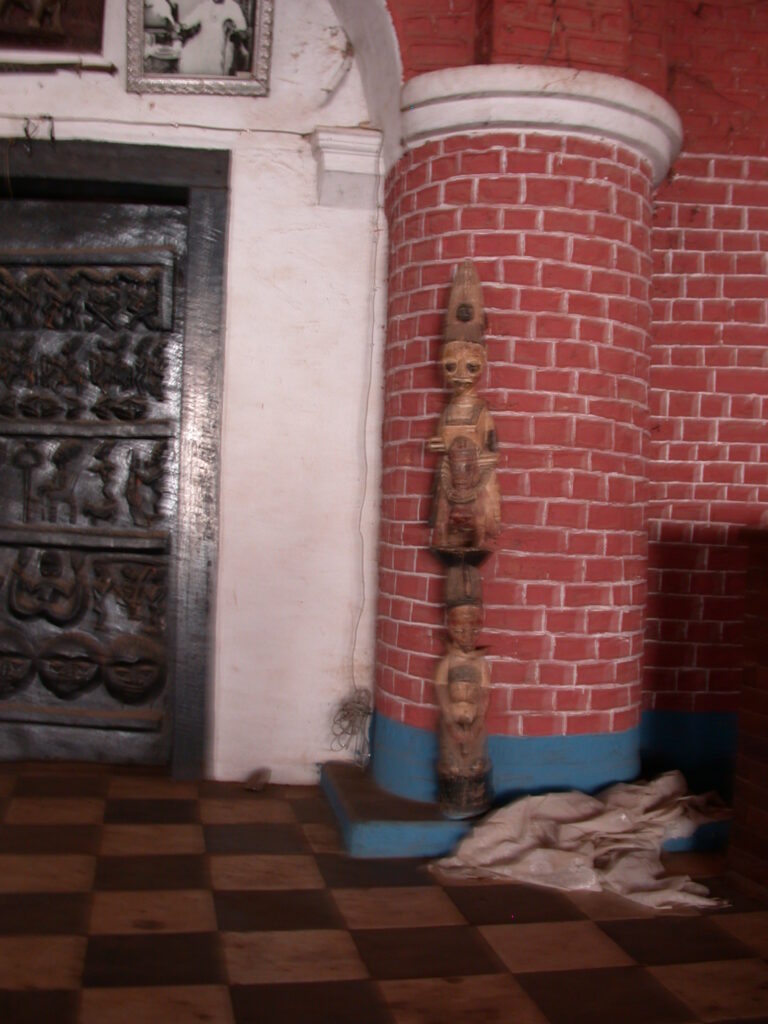
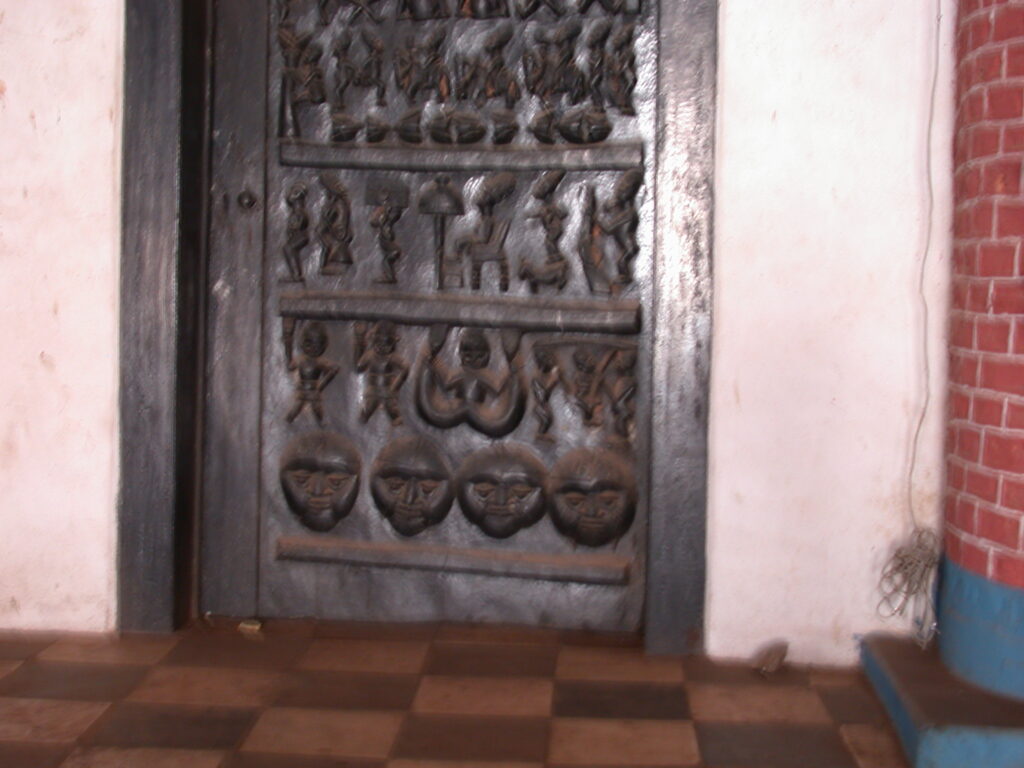
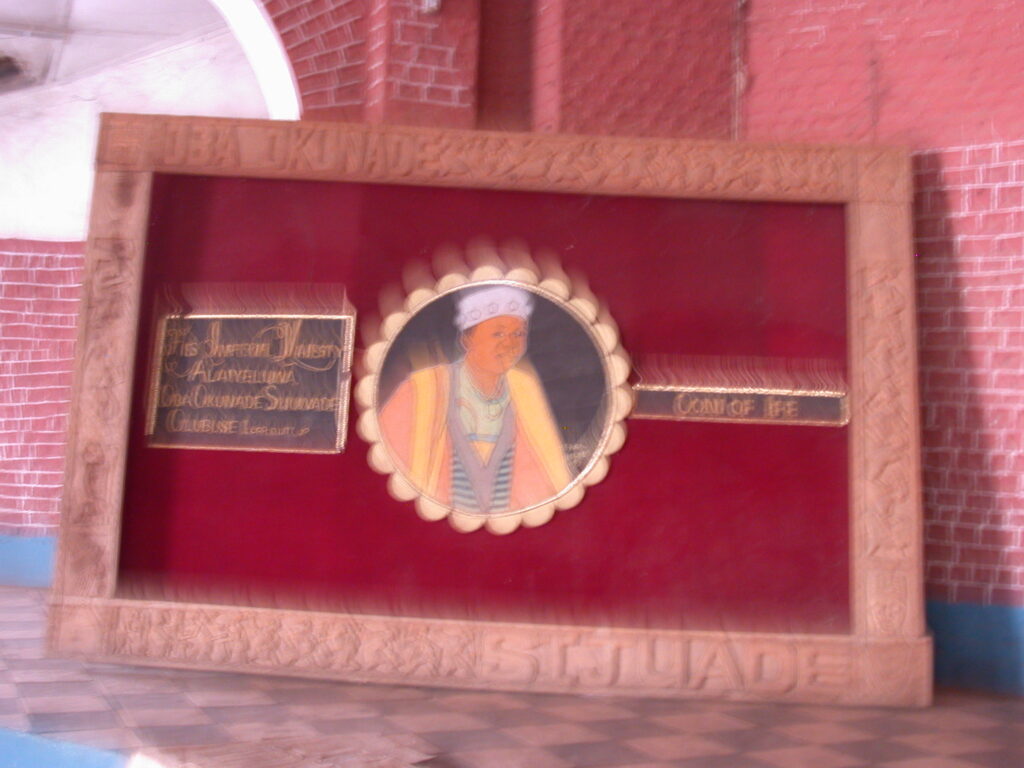
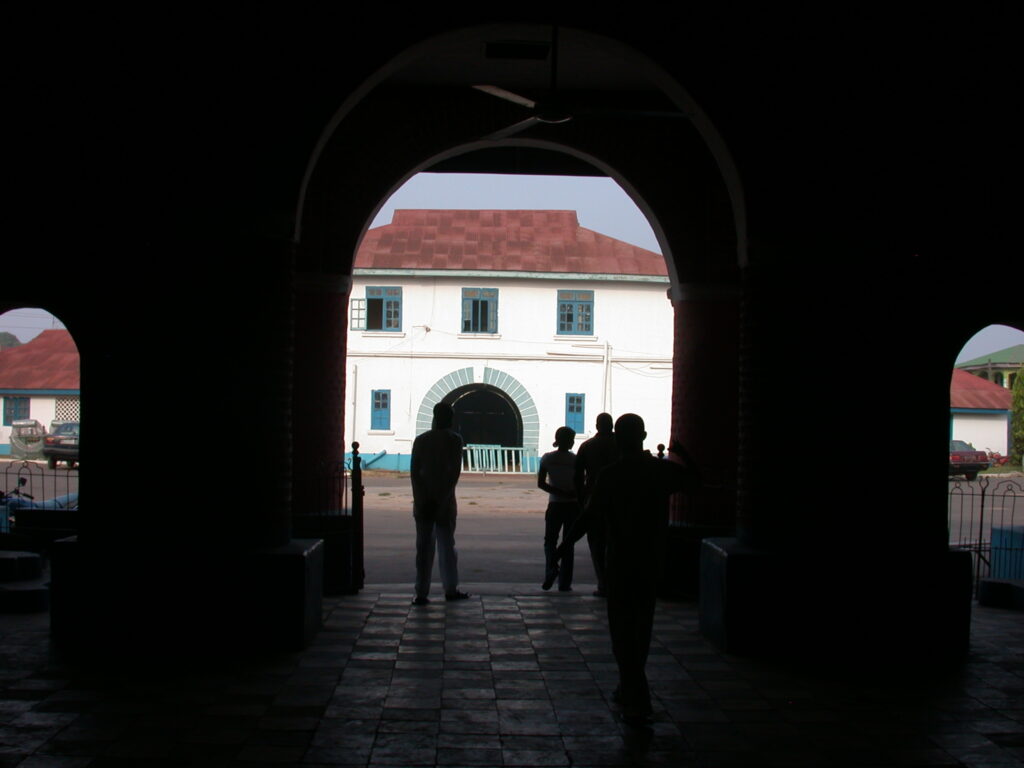
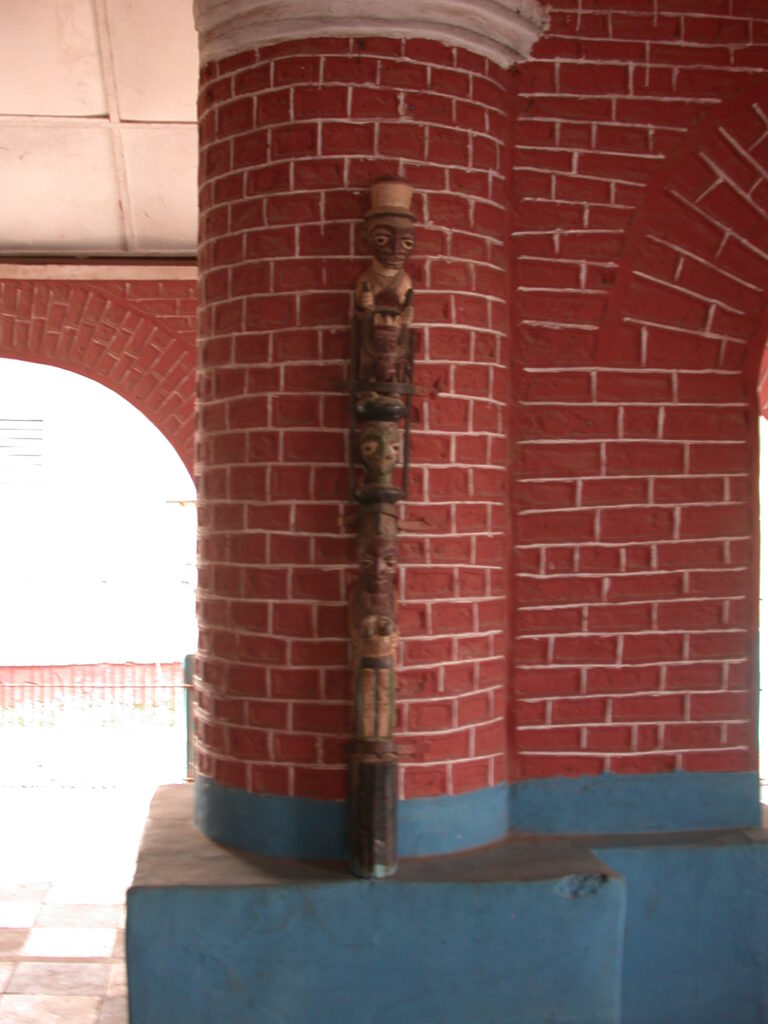

Thanks to those people who made this museum possible. This has put Ile Ife in the limelight and will also enhance the tourism industry of the city. Well done. I also thank Kabiesi the Imperial Majesty of Yoruba Land, the Ooni of Ife. May you reign over us for a long time. Igba Odin Odin kan.